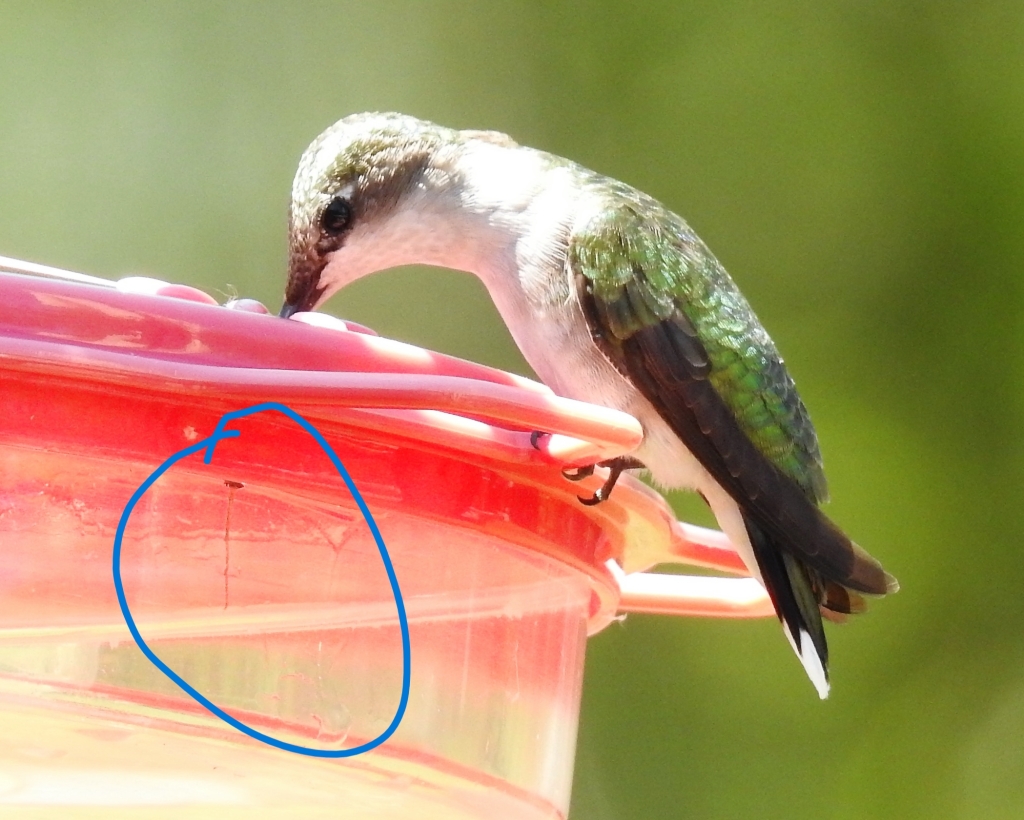



The ruby-throated hummingbird (Archilochus colubris) migrates to breeding habitats primarily east of the Rocky Mountains, from the Gulf of Mexico to southern Canada. It is the only species that nests east of the Mississippi River and is the only hummingbird that is regularly seen in Maine. Source: https://extension.umaine.edu/publications/7152e, Bulletin #7152, Understanding Ruby-Throated Hummingbirds and Enhancing Their Habitat in Maine.
Hummingbirds drink nectar using tongues that are so long that, when retracted, they coil up inside the birds’ heads, around their skulls and eyes. At its tip, the tongue divides in two and its outer edges curve inward, creating two tubes running side by side. The tubes don’t close up, so the birds can’t suck on them as if they were straws. Instead, scientists believed that the tubes are narrow enough to passively draw liquid into themselves. That process is called capillary action. It’s why water soaks into a paper towel, why tears emerge from your eyes, and ink runs into the nibs of fountain pens. Source: https://www.theatlantic.com/science/archive/2017/11/hummingbird-tongues/546992/


